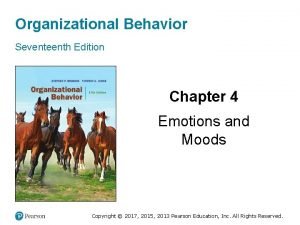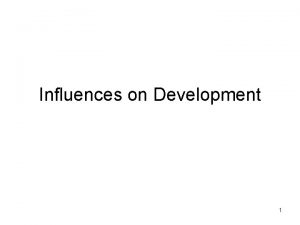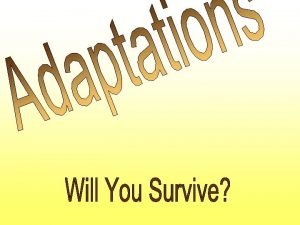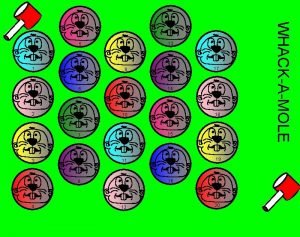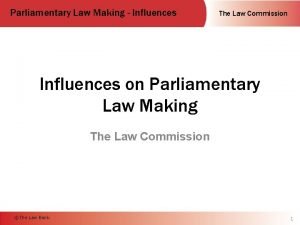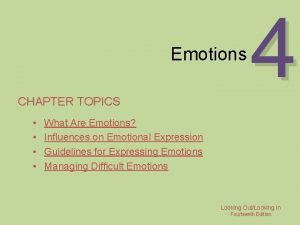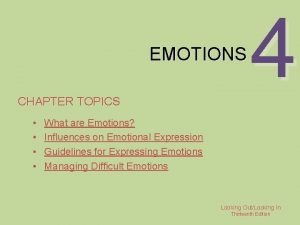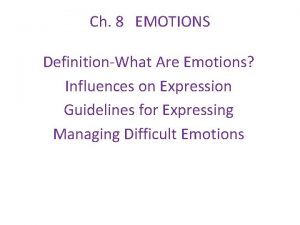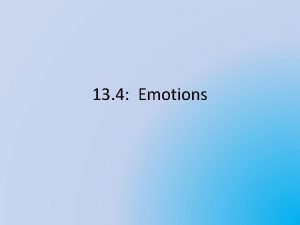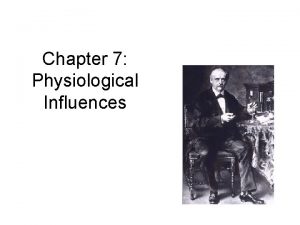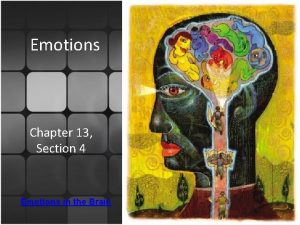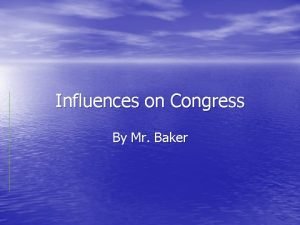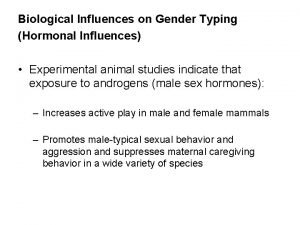EMOTIONS CHAPTER TOPICS 4 What Are Emotions Influences
























- Slides: 24

EMOTIONS CHAPTER TOPICS 4 What Are Emotions? Influences on Emotional Expression Guidelines for Expressing Emotions Managing Difficult Emotions Looking Out/Looking In Fourteenth Edition

What Are Emotions? Physiological ü Increased heart rate Nonverbal Reactions ü Appearance changes ü Behavioral changes ü Rise in blood pressure ü Increase in adrenalin ü Elevated blood sugar ü Slowing of digestion ü Dilation of pupils Verbal Reactions Cognitive Interpretations ü Pitch / Rate of Voice ü Prior Experience ü Volume ü Second Guessing Motives ü Tone EMOTIONS: FEELING, THINKING, AND COMMUNICATING 2

Influences on Emotional Expression Culture Individualistic (U. S and Canada) Collectivistic (Japan and India) Gender Biological sex is the best predictor of the ability to detect/interpret emotional expression Fear of Self-Disclosure In a society that discourages the expression of emotions, revealing them can seem risky Someone who shares feelings risks unpleasant consequences EMOTIONS: FEELING, THINKING, AND COMMUNICATING 3

Guidelines for Expressing Emotion When and Where Responsibility Channel EMOTIONS: FEELING, THINKING, AND COMMUNICATING 4

Managing Difficult Emotions Facilitative and Debilitative Emotions Facilitative Emotions contribute to effective functioning Debilitative Emotions which detract from effective functioning Intensity Duration Rumination EMOTIONS: FEELING, THINKING, AND COMMUNICATING 5

Managing Difficult Emotions Self-Talk Interpretations people make of an event, during the process of self-talk that determine their feelings Event Thought Feeling Being called names Getting dumped “I’ve done something wrong. ” hurt, upset I’m not good enough EMOTIONS: FEELING, THINKING, AND COMMUNICATING Embarrassed 6

The assumption that if something bad can happen, then it is going to happen Worthwhile communicatio n can fix all situations Vital to gain the approval of everyone Fallacy of Catastrophic Expectation Fallacy of Perfection Fallacy of Approval What is and what should be The Fallacies and Managing Emotions Fallacy of Shoulds Fallacy of Helpless-ness Fallacy of Causation Fallacy of Over -generalizations Satisfaction in life is determined by forces beyond your control The belief that emotions are caused by others rather than by one’s own self-talk Exaggerate shortcomings

Managing Difficult Emotions Minimizing Debilitative Emotions Monitor your emotional reactions Note the activating event Record your self-talk Reappraise your irrational beliefs EMOTIONS: FEELING, THINKING, AND COMMUNICATING 8

LANGUAGE CHAPTER TOPICS 5 Language Is Symbolic Understandings and Misunderstandings The Impact of Language Gender and Language Culture and Language Looking Out/Looking In Fourteenth Edition

Language Is Symbolic � The Natural World � Smoke means something is burning � A fever means someone is ill � Language Is Symbolic � Connection between words and the ideas or things they represent is arbitrary EMOTIONS: FEELING, THINKING, AND COMMUNICATING 10

Understandings and Misunderstandings �Abstraction �Is vague in nature �Behavioral language is specific to things people do or say �Abstraction Ladder �Highly abstract language can lead to blanket judgments EMOTIONS: FEELING, THINKING, AND COMMUNICATING Figure 5. 1 11

Understandings and Misunderstandings �Pragmatic Rules �Some rules shared by most people in a culture �People in their own individual relationships create their own sets of rules EMOTIONS: FEELING, THINKING, AND COMMUNICATING 12

The Impact of Language � Naming and Identity � Names are more than just a simple means of identification � They shape the way others think of us � They shape the way we view ourselves � They shape the way we act EMOTIONS: FEELING, THINKING, AND COMMUNICATING 13

The Impact of Language � Affiliation � Speech can build and demonstrate solidarity with others e c ’s n e e n g o r Dive hasizes others p m E om r f e nc e r e f dif EMOTIONS: FEELING, THINKING, AND COMMUNICATING ce n e g r e Conv ting one’s n i p - Ada style to fit h c e e p s 14

The Impact of Language � Powerless Language � Hedges � Hesitations � Intensifiers � Polite forms � Tag questions � Disclaimers � Rising inflections EMOTIONS: FEELING, THINKING, AND COMMUNICATING 15

The Impact of Language � Powerless Language � Powerful speech is culturally based � Language that is too powerful may intimidate � In some situations, polite forms of speech can enhance effectiveness EMOTIONS: FEELING, THINKING, AND COMMUNICATING 16

The Impact of Language � Disruptive �Three language linguistic habits to avoid Fact-Opinion Confusion � Fact-Inference Confusion � Emotive Language � EMOTIONS: FEELING, THINKING, AND COMMUNICATING 17

The Impact of Language � Language of Responsibility � “It” Statements � “But” Statements � “I” and “You” Language � “We” Language EMOTIONS: FEELING, THINKING, AND COMMUNICATING 18

Gender and Language � Content � Female friends spent more time discussing: � Relationship � Male problems, family, health friends spent more time discussing: � Current events, music, sports, business � These differences can lead to frustration when men and women try to converse with one another EMOTIONS: FEELING, THINKING, AND COMMUNICATING 19

Gender and Language � Conversational Style � The myth that women are more talkative than men does not hold up under scientific scrutiny � Women ask more questions in same-sex conversations � Men’s speech is more characteristically direct, succinct, taskoriented � Women’s speech is more typically indirect, elaborate, focused on relationships EMOTIONS: FEELING, THINKING, AND COMMUNICATING 20

Culture and Language � Verbal Communication Styles � Low-context cultures � Generally value language to express thoughts, feelings, and ideas as directly as possible. � High-context cultures � Generally value using language to maintain social harmony. � Learn to discover meaning from the context in which a message is delivered: nonverbal behaviors, history of the relationship, etc. EMOTIONS: FEELING, THINKING, AND COMMUNICATING 21

Culture and Language � Verbal Communication Styles � Language styles can vary across culture � Elaborate - Succinct � Formality - Informality EMOTIONS: FEELING, THINKING, AND COMMUNICATING 22

Culture and Language � Verbal Communication Styles � Language � Linguistic and Worldview relativism The worldview of a culture is shaped and reflected by the language its members speak. Sapir-Whorf hypothesis EMOTIONS: FEELING, THINKING, AND COMMUNICATING 23

Chapter Review � Language Is Symbolic � Understandings and Misunderstandings � The Impact of Language � Gender and Language � Culture and Language EMOTIONS: FEELING, THINKING, AND COMMUNICATING 24
 Insidan region jh
Insidan region jh Chapter 9 topics in analytic geometry
Chapter 9 topics in analytic geometry Chapter 3 lesson 3 expressing emotions in healthful ways
Chapter 3 lesson 3 expressing emotions in healthful ways Chapter 3 achieving mental and emotional health answer key
Chapter 3 achieving mental and emotional health answer key Organizational behavior chapter 4 emotions and moods
Organizational behavior chapter 4 emotions and moods Chapter 2 personality self-esteem and emotions
Chapter 2 personality self-esteem and emotions Bob fosse influences
Bob fosse influences Major influences on business buyers
Major influences on business buyers Roy lichtenstein influences
Roy lichtenstein influences Normative age graded
Normative age graded Internal influences business studies
Internal influences business studies Environmental influences
Environmental influences Factor influence communication
Factor influence communication Latitude strongly influences climate because
Latitude strongly influences climate because Environmental influences
Environmental influences Everything that surround us
Everything that surround us Normative age graded influences
Normative age graded influences Social influences on consumer behavior
Social influences on consumer behavior Annie leibovitz education
Annie leibovitz education Analyzing influences meaning
Analyzing influences meaning Which of the following is a pronatalist pressure?
Which of the following is a pronatalist pressure? French table setting
French table setting Example of cultural influences
Example of cultural influences Advantages and disadvantages of influences on parliament
Advantages and disadvantages of influences on parliament Influences on parliamentary law making
Influences on parliamentary law making




